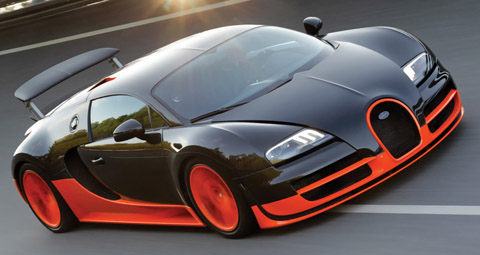The design philosophy for the 9900 drew heavily from luxury brands such as BMW, Panerai and Prada leather boots. It shows.
The display is made from extra hardened glass, the carbon fibre looking back is actually constructed from a glass composite and the iPhone’esque brushed metal band that circles the phone, contributes to an extremely solid feel overall.
The 9900 is RIM’s thinnest BlackBerry to date at 10.5mm. Weighing in at a mere 130g and flanked by soft-touch rubber, the 9900 feels great in hand, and despite being quite sizable at 66mm wide and 116mm high, still fits comfortably in your pocket thanks to its thin profile.
The 9900′s colour scheme, including the backlighting is almost entirely monochrome with only the notification LED delivering some colour to the palette. The trackpad is now lit up, which is a nice addition but it feels awkwardly placed. I found myself accidentally touching the screen at times when swiping up on the trackpad. It’s a small gripe however, as I intuitively used using the touchscreen mostly, and I wondered if RIM considered doing away with the trackpad all together.
The 9900 has one convenience key on the right-hand side of the phone — programmed to open the camera by default –, as well as volume up and down keys. The mute button is now situated between the volume rockers. A lone lock/unlock button is situated at the top, while on the left you’ll find a 3.5mm headphone jack and microUSB port. On the bottom of the phone, there are two contact points for the BlackBerry Charging Pod, a speaker, and hidden behind a piece of faux metal you’ll find the antenna — RIM’s clearly heeding lessons learned from antennagate.
The SIM and microSD slots are inside the battery compartment, and it’s worth noting that you can’t extract or insert a microSD card without first removing the battery.
Performance
The 9900′s heart is a Qualcomm Scorpion MSM 8655 processor which runs at 1.2GHz (twice as fast as the fastest last generation BlackBerries) on the Snapdragon S2 chipset. The chipset brings an Adreno 205 GPU to the table which means for the first time on a GSM BlackBerry, you get hardware accelerated graphics or “Liquid Graphics” as RIM likes to call it. Developers can tap into the GPU through the OpenGL ES 2.0 API for their 2D and 3D application needs, which mean you could potentially run Angry Birds on your 9900 — if it ever received Rovio’s blessing.
If I were writing this review one year ago, these specs would have been super competitive. Even today for example, the Adreno 205 is faster than the iPhone 4′s PowerVR SGX535 GPU, and the MSM 8655 beats the iPhone 4′s ARM Cortex-A8 processor, but dual-core CPUs became the norm for high-end smartphones this year, and quad-core CPUs are already confirmed for 2012.
The 9900′s internals feels like last year’s hotness.
On the flip side, on a BlackBerry running the BlackBerry OS 7, the difference that the new chipset makes is nothing short of astounding. Apps open and close instantly, HD video recording and playback is smooth, the web browser runs 40 percent faster than on OS 6, and although the watch icon — BlackBerry OS’s version of the hourglass — appears from time to time, one wonders why, as the 9900 remains responsive even in situations where performance historically took a hit, like when installing apps.
Arguing in favour of the 9900′s antediluvian internals, the existing BlackBerry app catalogue isn’t really processor hungry anyway, and yet the small number of OS 7 apps that do take advantage of the new chipset, run phenomenally well.
If the 9900 were released a year ago, we might have had some compelling titles by now, but I’m not overly hopeful developers will be inspired to develop for OS 7. QNX handsets and a new SDK are already rumoured for Q1 2012, and so OS 7, soon to be usurped, running on last year’s internals, means that the app catalogue will probably remain modest for the time being.
